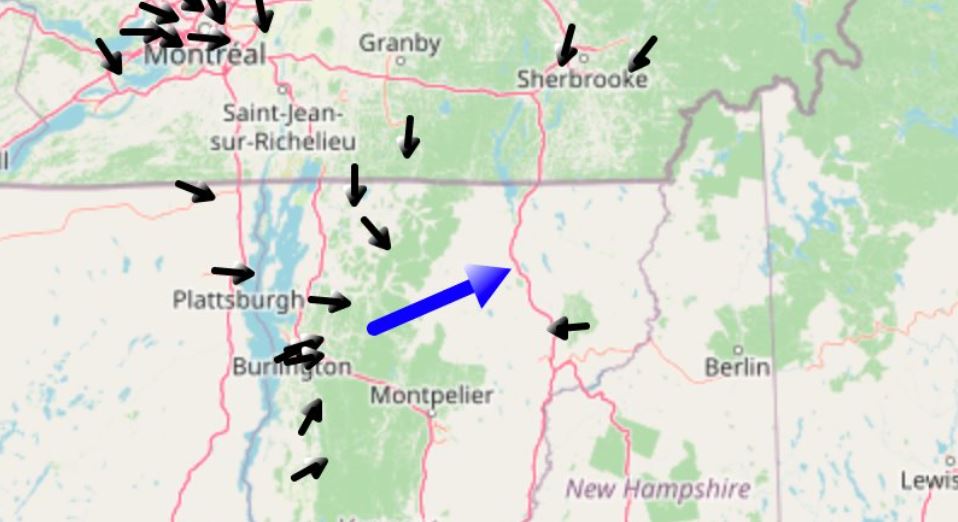Meteor explodes over Vermont with the force of 440 pounds of TNT
It was the size of a bowling ball but exploded like 440 pounds of TNT

A meteor streaked through the night sky over Vermont on Sunday (March 7), creating a spectacular light show and causing Earth-shaking booms as it burned through the atmosphere.
The meteor's explosive passage through the atmosphere released the equivalent of 440 pounds (200 kilograms) of TNT, suggesting that the meteor was likely 10 pounds (4.5 kg) and 6 inches (15 centimeters) in diameter, according to NASA Meteor Watch.
The space rock smacked into the atmosphere at about 42,000 mph (68,000 kph), according to NASA. It appeared over the northern part of the state as a bright fireball at 5:38 p.m. EST, just before sunset.

Local news station WCAX3 reported calls from all over the state after the event, with Vermonters describing a "loud boom and body-rattling vibration" as the meteor passed overhead.
Related: Space-y tales: The 5 strangest meteorites
"I was fortunate to hear and see it by the Missisquoi River at the Missisquoi Wildlife Refuge in Swanton, VT, just before sunset," wrote Chris Hrotic, a commenter on NASA's initial post about the event. "No loud boom as reported by others, but a rushing sound that made me look up at just the right moment. It was extremely bright and absolutely spectacular!"
Based on eyewitness accounts, NASA estimates that the fireball first appeared 52 miles (84 km) over Mount Mansfield State Forest just east of Burlington, the state's largest city. It then progressed 33 miles (53 km) northeast toward the Canadian border, disappearing 33 miles (53 km) above the ground south of the town of Newport.
Get the Space.com Newsletter
Breaking space news, the latest updates on rocket launches, skywatching events and more!
According to NASA, the shock wave was a result of the meteor fracturing due to atmospheric pressure. As the bowling ball-size chunk of a larger parent asteroid moved at nearly 55 times the speed of sound through the atmosphere, pressure built up in front of it and a vacuum formed behind it. Eventually, the stress of that differential caused the rock to explode.
In comments on NASA's initial Facebook post about the incident, people claimed to have seen the rock from as far west as Saratoga, New York, as far north as Quebec, and as far east as Watertown, Massachusetts.
Originally published on Live Science.
Join our Space Forums to keep talking space on the latest missions, night sky and more! And if you have a news tip, correction or comment, let us know at: community@space.com.

Rafi wrote for Live Science from 2017 until 2021, when he became a technical writer for IBM Quantum. He has a bachelor's degree in journalism from Northwestern University’s Medill School of journalism. You can find his past science reporting at Inverse, Business Insider and Popular Science, and his past photojournalism on the Flash90 wire service and in the pages of The Courier Post of southern New Jersey.










